Lake Boga Flying Boat Base was a Royal Australian Air Force (RAAF) flying boat base at
Lake Boga, Victoria, Australia during World War II.
When the Imperial Japanese attacked
Darwin and
Broome in 1942 resulting in the loss of 16 flying boats, the establishment of a safe haven for flying boats was required inland as a remote facility outside the sphere of Japanese airplanes.
Lake Boga was picked as it allowed almost unlimited choice of landing/take off directions and was free of obstructions. It was also close to nearby
infrastructure.
Required for Australian, Royal Netherlands East Indies Air Force and
United States flying boat servicing and repairs,
Lake Boga was commissioned in June 1942.
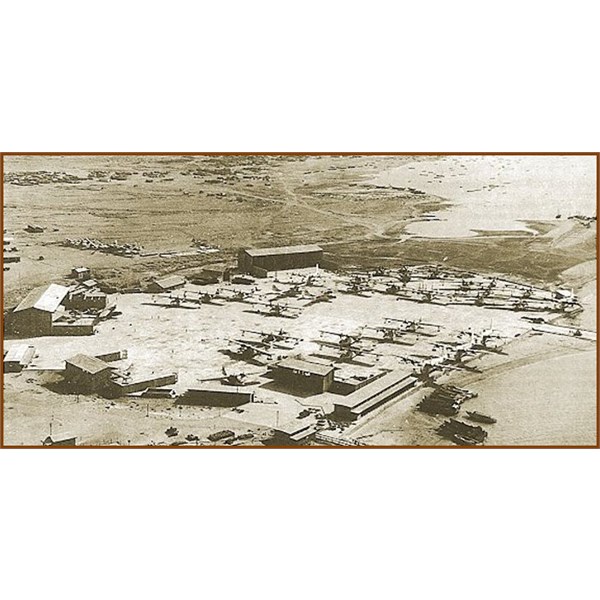
Lake Boga Flying Boat depot when Operational

No 1 Flying Boat repair Depot during WW2
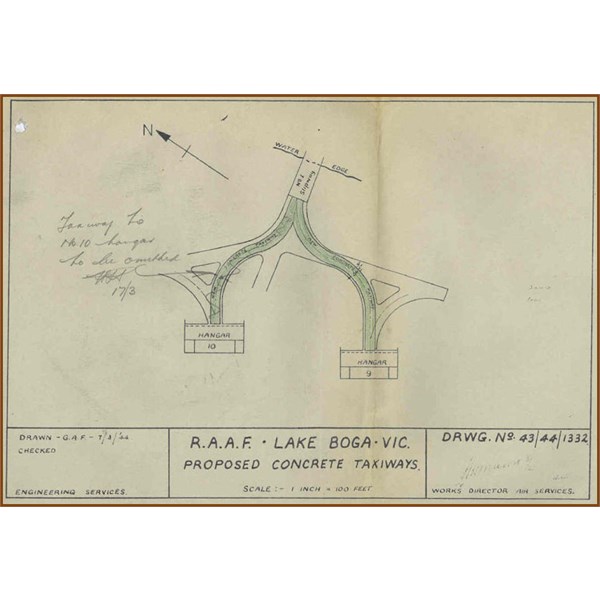
Proposed Taxiways
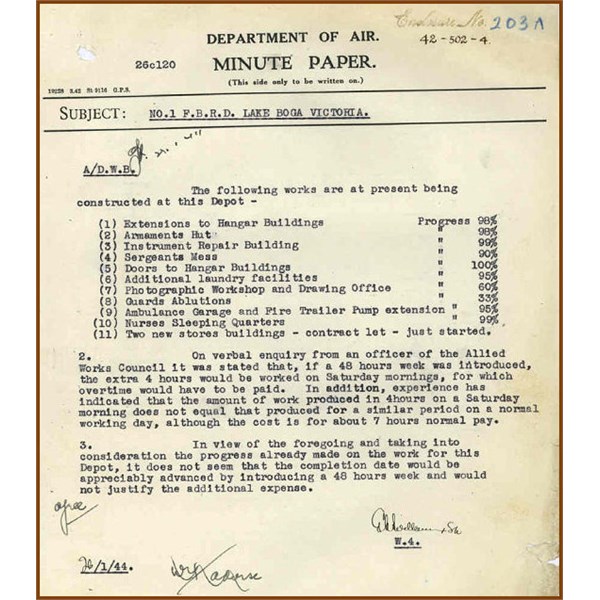
Minute Paper for No 1 F.B.R.D.
No. 1 Flying Boat Repair and Service Depot was set up to provide the repair and servicing requirements.
Lake Boga was recommended by Squadron Leader Gareth O'Brien since he was familiar with the area having grown up in Kerang. Of note, Myles O'Brien (Father to Gareth) was the local solicitor and owned the first auto-mobile in Kerang. SQN leader Gareth O'Brien saw service with the R.N.A.S Royal Navel Ariel Service in Yorkshire UK in the late 1920s and Cairo, Egypt in the early 1930s. Being an avid photographer of that time he took many black and white photographs that still exist and have been published in some historical publications. Flight Lieutenant (at the time) Gareth O'Brien was awarded the D.S.O. for dropping two bombs from his aircraft on a submarine in the English Channel, March 6, 1918. A direct hit was reported by the observer and it was thought to have sunk but SQN Leader O'Brien, in a letter to his Father, thought he perhaps only gave it a 'shake up'.

New Works Order for Wind break

Wind break between Buildings 14 & 15 view from the rear
Facilities constructed at the base included workshops and hangars on the foreshore, a stores area, living quarters, sick quarters at Castle Donnington, a first-aid and dental post, a radio transmitting station and a VHF transmitting station.
Flying boats serviced, repaired, restored, rebuilt or overhauled during the operation of the base were PBY Catalina, Dornier Do 24, OS2U Kingfisher, Short Sunderland, Supermarine Walrus and Martin Mariner. The station at
Lake Boga closed in November 1947.
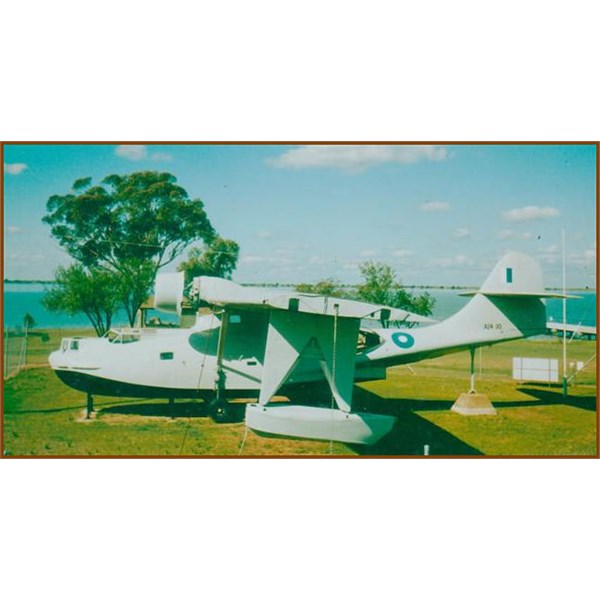
Catalina A24-30 reconstructed by the Lake Boga Lions Club in 1983
Thanks to Bron Smith of Granton, suburb of
Hobart, Tasmania for these 3 fantastic photo's below at the Museum .

RAAF PBY-5 Catalina A24-30 Lake Boga
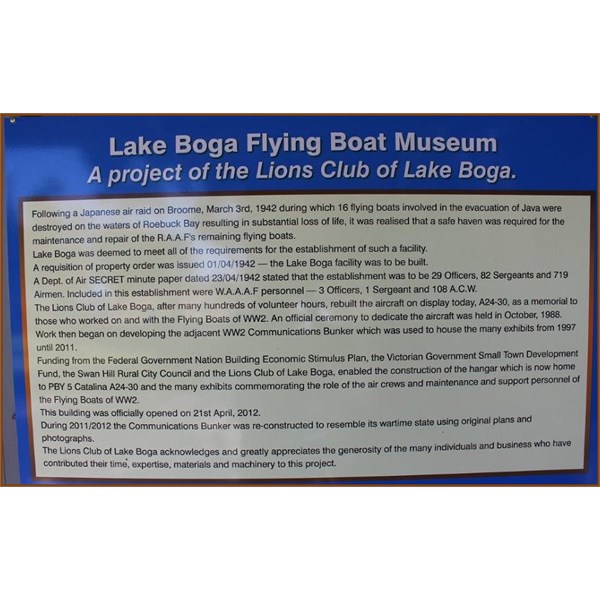
Lake Boga Flying Boat Museum Info
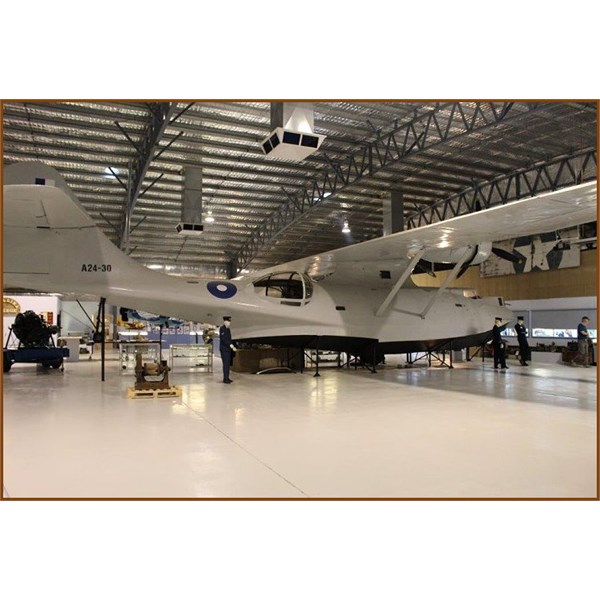
RAAF PBY-5 Catalina A24-30 Lake Boga Museum
.